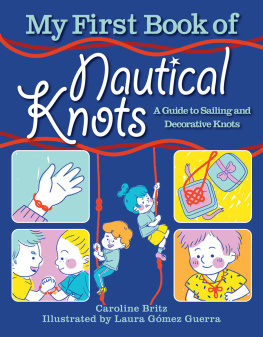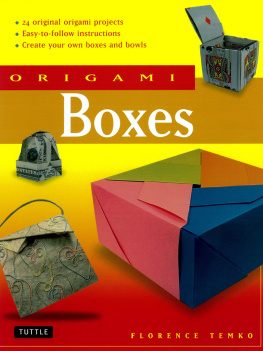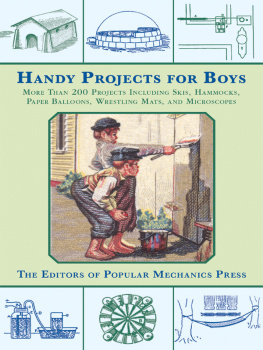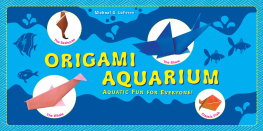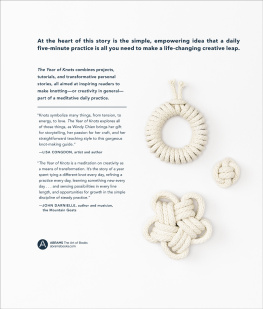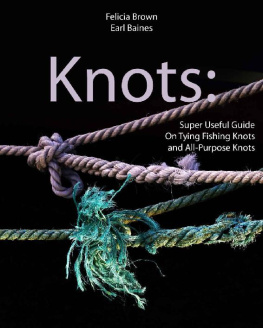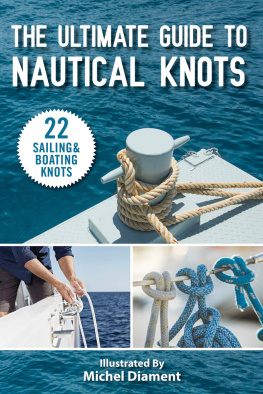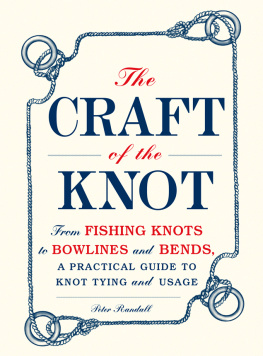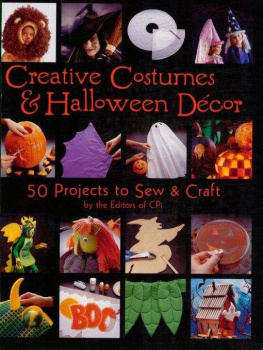This book is dedicated to those forgotten and anonymous sailors, riggers, sailmakers, fendermakers and other workers with rope who passed their knowledge on to the next generation so these skills can be with us today. Thank you.
Adlard Coles Nautical
An imprint of Bloomsbury Publishing Plc
50 Bedford Square | 1385 Broadway |
London | New York |
WC1B 3DP | NY 10018 |
UK | USA |
www.bloomsbury.com
www.adlardcoles.com
ADLARD COLES, ADLARD COLES NAUTICAL and the Buoy logo
First published 2016
Des Pawson, 2016
This electronic edition published in 2016 by Bloomsbury Publishing Plc
Bloomsbury is a registered trademark of Bloomsbury Publishing Plc
Des Pawson has asserted his right under the Copyright, Designs and Patents Act, 1988, to be identified as Author of this work.
All rights reserved
You may not copy, distribute, transmit, reproduce or otherwise make available this publication (or any part of it) in any form, or by any means (including without limitation electronic, digital, optical, mechanical, photocopying, printing, recording or otherwise), without the prior written permission of the publisher. Any person who does any unauthorised act in relation to this publication may be liable to criminal prosecution and civil claims for damages.
No responsibility for loss caused to any individual or organization acting on or refraining from action as a result of the material in this publication can be accepted by Bloomsbury or the author.
British Library Cataloguing-in-Publication Data
A catalogue record for this book is available from the British Library.
Library of Congress Cataloguing-in-Publication data has been applied for.
ISBN: 978-1-4729-2278-6 (PB)
ISBN: 978-1-4729-2279-3 (eBook)
ISBN: 978-1-4729-2280-9 (ePDF)
Photographs Horst A. Friedrichs
To find out more about our authors and their books please visit www.bloomsbury.com where you will find extracts, author interviews and details of forthcoming events, and to be the first to hear about latest releases and special offers, sign up for our newsletters.

INTRODUCTION
Many people ask me if I have an apprentice; the answer is no, but by sharing my knowledge in print I hope to help many more than I might by having an apprentice. In the first place I learned my trade from books; the beauty of books is that they can be referred to long after a one-to-one lesson has finished. In some ways it can be said that I learned from many masters, and although some are no longer with us, their thoughts and expertise endure in their writings. This book, born from a wish to build on my previous published book, Des Pawsons Knot Craft, contains more projects and many more mats, both of which I have been asked for by a lot of people.
I find that drawings are the best vehicle to explain what is going on in a particular knot or sennit. Learning to read the drawings is in itself a skill to be gained; do not start with the most complicated thing. Indeed, if possible try to equate one diagram with a knot you already know; in that way you will gain an understanding of the visual language used in this book. The use of colour in the diagrams I hope makes them a little clearer.
Many books have been published on how to tie practical knots, and a lesser number on decorative knotting. While the latter may show how to make a fancy knot, they dont provide much help in putting the knots together to make an object be it a key fob, fender, rope ladder, mat or lanyard. Sometimes there may be an illustration of a finished item for inspiration, or even a couple of extra projects, but rarely is there a step-by-step breakdown, complete with details of the exact size and lengths of materials required and with full instructions the complete recipe for the very thing you want to make. Here, I hope, is the book that provides just that.
Not having enough cordage is a continual risk. However much you try to remember how much line went into an item you have made in the past, you have long since forgotten and you are back to guessing, hoping that you have guessed correctly or with a bit to spare. Then comes the day when you have a length of good old rope and you want to make a mat with it; the length is tight if only you knew the exact amount needed. Or you have six metres of super-fine tarred 3mm twine left. Will this be enough for that bell rope you wanted to make as a special gift, or having started will you find its too short and the six metres wasted? The wasting of rope, new or old, is something that any owner, skipper, mate, bosun or craftsman abhors. Cordage is a precious material to be valued, treasured and conserved.
After many years of guesswork and the occasional note in the margins of my knotting books, I belatedly, in 1977, started to keep a recipe book. In this I recorded the finished size of the item I had made, what material I had used, and how much had been needed to make it. I added the special little tricks and hints that helped the item to fall right and to be finished neatly. I sketched the special knot that was required, or noted the book that gave this information. I was able to add special details and methods shown to me by my knotting peers. And while inevitably not everything always got recorded, over the years I have built up a great body of information.
Rope makes wonderful hard-wearing mats. You can use old rope, new rope or even the yarns drawn out from old rope and plaited together. Historically such mats would have been used as doormats and to protect against chafe on ships. Today they can give a boat a real seamanlike touch. Around the home there are few things nicer than a home-made doormat, while smaller mats can serve as coasters or table mats, to protect a table from a hot pan, stand a plant pot or vase on, or perhaps set off an antique model boat. You could even make mats in fine twine for a dolls house (a good way of practising without using a great deal of material!). I have included a wide selection of designs, ranging from the very simple basic flattened Turks head to the most complex and challenging interlinked hitches, or a mat with many bights on each side.
Within these pages I share with you a selection of the designs and ideas from my recipe book. When demonstrating, I am often asked how to make the various things that I have around me, so here are the basic designs, an indication of their size and details of which knots and sennits are used to make them. I give you a list of materials and their lengths and sizes and in specifying the lengths I have erred very slightly on the side of generosity because all materials vary in the way they make up, and each craftsmans knotting tension differs. You may well wish to adjust the material lengths to suit yourself and your favourite cordage. The stated materials and knots should make what I describe, but it is always possible to make items longer or shorter, or to use bigger or smaller line. It can help to keep a record of any variations: the more information you have, the better your guesses will be in the future.
As this is a recipe book rather than a how-to-tie-knots book (there is a good list of these ), I have simply named the knots and sennits that go to make up each item. This can lead to a degree of misunderstanding, as many knots have more than one name, so in most cases there is a simple aide-memoire for the more specialised knots or techniques. Rather than each of these being repeated every time it crops up in a design, there is a cross-reference to the page with the illustration.
Next page


